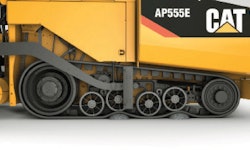
Court denies government’s motion to dismiss contractor’s $1 million claim
In the recent case of West Bay Builders, Inc. v. Dept. of the Interior (April 29, 2013), the government’s motion to dismiss West Bay Builders’ claim for almost $1 million was denied based on a contract ambiguity regarding concrete construction joints.
The subject of contract interpretation involves interpreting human communications. Construction and contract law are two specialized fields with their own set of jargon and technical language that has developed during time. The language of these areas is common to architects, engineers, contractors, subcontractors, material suppliers and attorneys. This language, however, is foreign and often misunderstood by lay people and the courts: courts often with rules of contract interpretation, especially in technical areas like construction law.
Throughout the years, different court approaches have developed to contract interpretation. These include “strict” rules of interpretation that focus on determining a contract’s “plain meaning.” In contrast, “liberal” rules of interpretation focus on determining the “intention of the parties.”
Ambiguity in contracts occurs when contract language has more than one meaning. If an ambiguity is obvious, it is called “patent.” If there is a hidden ambiguity, it is called “latent.” Since construction contracts typically include numerous documents, including the contract, general and supplementary conditions, specifications, and drawings, the likelihood increases of an ambiguity in the contract. In attempting to interpret ambiguities in contracts, courts often sometimes consider the role of trade custom and usage, including the parties’ course of performance.
In West Bay Builders, Inc. vs. Dept. of the Interior (2013), the contractor claimed an ambiguity in its contract regarding construction joints for a concrete siphon. West Bay Builders was awarded a contract to construct the Red Bluff Pumping Plant and Fish Screen Landfill Excavation & Canal, Siphon and Access Bridge. The concrete siphon consisted of a large concrete structure with a slab-on-grade, walls and a ceiling. Section 3.04 of the specifications, “Joints and Edges,” set forth four joints to be used in concrete construction, including construction joints, contraction joints, control joints and expansion joints.
On Feb. 2, 2010, West Bay submitted RFI No. 1, requesting permission to omit the construction joints at the intersection of the walls and top of the siphon because it planned to place the vertical walls and top of the walls monolithically. The government denied the request, stating the construction joints were necessary “at the design locations due to the restrained cracking experienced in similar types of structures, particularly in the thick areas where walls/floors or wall/ceilings are cast together.”
A year later, West Bay asked the government to reconsider its response. West Bay stated it had based its bid on pouring the siphon walls and soffit monolithically. After its request was denied, West Bay stated it had proceeded with a different form system for Phase I of the siphon, was not as productive as hoped for and incurred substantially more costs than anticipated. To mitigate its losses, West Bay requested the government reconsider RFI No. 1 because they said it would save both parties time and money. In April 2011, the government denied West Bay’s request.
West Bay wrote the contracting officer (CO), stating “industry standards” indicate the contractor should decide whether or not to include or eliminate construction. On July 14, 2011, West Bay submitted a proposed change seeking $920,163 from the government’s refusal to eliminate the construction joints. On Aug. 1, 2011, West Bay converted its proposal to a certified claim. On Oct. 28, 2011, the CO denied West Bay’s claim. West Bay appealed to the Civilian Board of Contract Appeals (the board).
In the board proceeding, the government brought a motion to dismiss West Bay’s claim, arguing the “plain meaning” of the specifications was clear and unambiguous regarding the type of joints, how they were shown in the drawings, and the CO’s right to approve (or disapprove) the relocation, addition or elimination of construction joints. The government disagreed that West Bay could decide on its own whether to eliminate construction joints because this would render meaningless the contract language requiring government approval for such changes.
 Brian Morrow
Brian MorrowIn response, West Bay argued the contract was ambiguous regarding the placement of joints. West Bay stated “control joints” did not require government approval for relocation, addition or elimination. West Bay noted the drawings did not reference “control joints,” though they provided details for other joints, including contraction and expansion joints. West Bay’s project manager noted the government allowed West Bay to omit construction joints in the slab-on-grade and elevated decks and argued the government was inconsistent in interpreting the contract.
In its decision, the board stated as West Bay recognized in its RFI, the joints in question appear to have been required by the specifications. However, based upon the minimal record before the board, they could not determine whether the specifications could be interpreted differently from how they were interpreted by the government. Given the early stage of the proceedings, the board denied the government’s motion.
The West Bay Builders decision underscores how ambiguities in contract language can arise, including from documents incorporated into the contract and course of performance. If a contractor believes that contract language is ambiguous, they should request clarification prior to bid opening so it is clear what they are bidding on. Otherwise, a court or jury — who typically lack technical knowledge and understanding — may decide a critical issue of contract interpretation and the contractor’s fate. In West Bay Builders, the board ruled in the contractor’s favor regarding a potential ambiguity, thus keeping alive the contractor’s claim for almost $1 million.










